| Video | Title/Summary | Crops | Institution |
|---|---|---|---|
 |
The Hidden Engineering of Qanats: Ancient Persia's Water Secrets Have you ever wondered how ancient civilizations thrived in harsh desert environments? Discover the incredible engineering feats of the ancient Persians with their groundbreaking water systems known as qanats. These aren't just any wells—these are miles-long underground tunnels that revolutionized water access and agricultural sustainability. Join us as we explore:
|
||
 |
The Ancient City That Mastered Water Have you ever wondered if water can flow uphill? In this video, we dive into the incredible engineering of the Alhambra Palace in Granada, Spain. Join us as we explore the history, architecture, and groundbreaking technology behind one of the world’s most stunning architectural masterpieces. Discover how this medieval marvel used advanced hydraulic systems to power fountains, underfloor heating, and even water clocks. |
||
 |
Making fertilizer in the desert
|
||
 |
How this ANCIENT wind catcher keeps buldings cool. A wind catcher, also known as a wind tower or wind scoop, is a traditional architectural element used in some arid and hot regions of the world to provide natural ventilation and cooling to buildings. It is typically found in areas where the climate is characterized by hot, dry summers and cool nights. |
||
 |
The Yakhchāl - Ancient Ice-Making Machines Found In Persian Desert Ancient Desert “FREEZER” Invented Around 400 BC In Persia, The Yakhchāl. |
||
 |
Watermelon In desert - کشاورزی با روشی عجیب در کویر Chale Sonbak is located in Aran o Bidgol Country, Iran. It’s a region where they cultivate watermelons without water, in the desert (desert farming). The watermelon produced here, has many medicinal properties. With Mr. Ramezani, we visited his father’s farm in Chale Sonbak and saw this dry farming method in person. |
||
 |
Iran, Siraf Historical Port - Ancient Water Collection Technology Bandar Siraf (“Siraf Port”) is one of the historical ports in Iran, that was considered one of the most popular and prosperous ports of Iran, from the ancient times up to the early 9th century. The largest water reservoir of ancient Iran was built in this city. The small water pools and the historical graveyard of Siraf, are two important landmarks that you should see on your journey to the south of Iran. I hope you enjoy this video. |
||
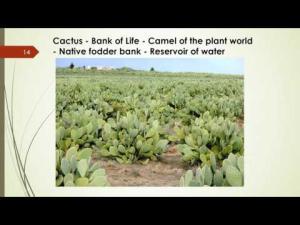 |
|||
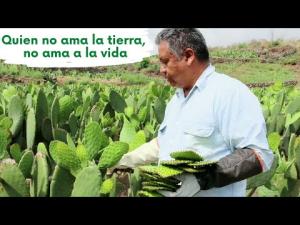 |
CONOCE LOS SECRETOS DEL NOPAL (Know the secrets of Nopal) The philosophy of the peasants is that those who do not love the earth, do not love life. In San Lorenzo they have their secrets that make it from the cut, the nopal is free of bacteria and how they should be stored to maintain their quality always. Transporting the product is not easy, it requires special care so that it does not mistreat and lose the product. Its producers have to face intermediaries who then spoil the process. Despite everything, nopal is a profitable crop, they are family businesses that generate employment. This story speaks as... |
||
 |
Jim Verner: Plant Nutrition September 23, 2020 Jim Verner lecture on Plant Nutrition |
||
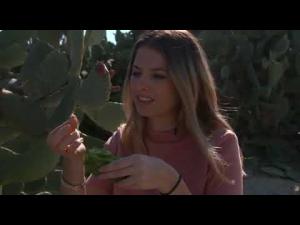 |
About Orly Cactus Farm About Orly Cactus Farm |
||
 |
Exploring biogas potential from cactus Spineless cactus, initially imported to address cattle feed shortages, is being transformed into a promising source of biofuel in India. The video explores its potential benefits and challenges. |
||
 |
Gabe Brown's 6 principles of regenerative agriculture for the home gardener I had the wonderful opportunity to interview Gabe Brown, a renowned and well-respected pioneer in the field of regenerative agriculture. Gabe is best known for his groundbreaking work in soil health and his commitment to sustainable farming practices that promote healthy ecosystems and thriving communities. Through years of experimentation and research, Gabe and team have devised a set of principles for regenerative agriculture that focus on improving soil health, promoting biodiversity, and reducing the use of synthetic chemicals. His innovative techniques have not only revitalized his own farm in North Dakota but have also inspired farmers and... |
||
 |
The Hope in Healthy Soil | Gabe Brown | TEDxFargo Regenerative agriculture provides us the opportunity to grow healthy soil, farms, food, and futures. But what does that mean? What challenges does it solve? And how can this help the common good? Gabe Brown is a leading figure in the soil health movement, advocating for the regeneration of natural resources. He and his wife, Shelly, founded Brown's Ranch, a 6,000-acre farm near Bismarck, ND, focusing on farming and ranching in harmony with nature. They have since transitioned the ranch's ownership to their son, Paul, and his wife, Jazmin. Gabe's work has earned numerous awards, including... |
||
 |
Regeneration of Our Lands: A Producer’s Perspective | Gabe Brown | TEDxGrandForks The United States is in crisis. The health of our soil resource has declined to such a point that it is not only negatively affecting farm and ranch profitability, but it is also having a devastating impact on everything from our water quality to our communities and even to our health. North Dakota rancher Gabe Brown walks us through a common sense solution to this crisis. Gabe Brown is one of the pioneers of the current soil health movement that focuses on regenerating our resources. Gabe, along with his... |
||
 |
Dr. José Dantas Neto - Professor Aposentado Da UFCG E Sócio Efetivo Do IHGSL
|
||
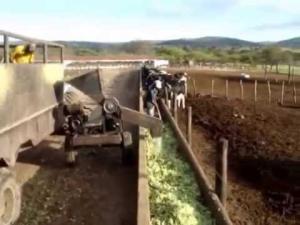 |
Feeding cactus to cows in large farming operations Feeding cactus (Opuntia) to cows in Brazil. Author: José C. Dubeux, Universidade Federal Rural de Pernambuco (UFRPE), 2011 |
||
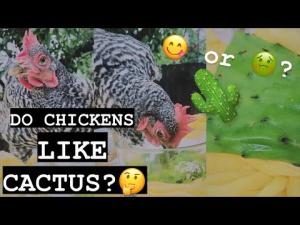 |
Can Chickens Have Cactus? Maisie trying and reviewing prickly pear Cactus |
||
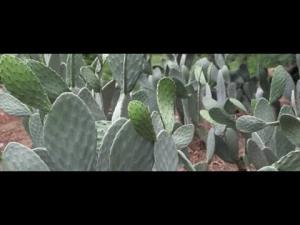 |
BAIF | Spineless Cactus | Fodder | 2020
Importance of cactus, different types of cactus, method of cactus planting, maintenance of cactus plantations, cactus harvesting, cactus feeding to animals |
||
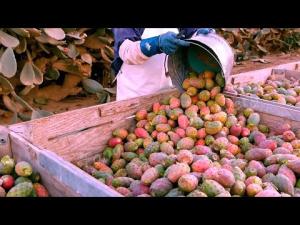 |
Cultivation And Harvesting Prickly Pear - Amazing agriculture Technology - Prickly Pear Processing Have you ever eaten a prickly pear? Today we will go to the prickly pear cactus plantations in South America to see how the farmers here cultivate and harvest millions of prickly pears. |